 |
|
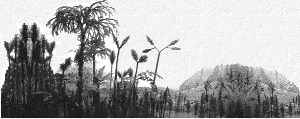 |
Ascomycetes are the largest group
of true fungi and are characterized by producing their sexual spores within
a sac-like structure termed the ascus. Included in this group are
forms used as medicinal agents (e.g., ergot), plant pathogens
(e.g., Dutch elm disease), and yeasts used in fermentation. The
oldest unequivocal evidence of ascomycetous fungi with flask-shaped ascocarps
have recently been described from the Lower Devonian Rhynie Chert (Taylor
et al., 1999).
| The fossils
occur as closed fruiting bodies (perithecia) scattered just beneath the
epidermis in the upright stems and rhizomes of the early land plant Asteroxylon;
a few have been identified on the scale leaves of this plant.
Asteroxylon, with its cross- to star- shaped xylem and scale-like leaves is the most complex land plant known from the Rhynie Chert. This photograph shows a cross section through the axis with a number of scale-like leaves (e.g., left) and several perithecia, the roundish brown structures in lower third of the picture and left above. |
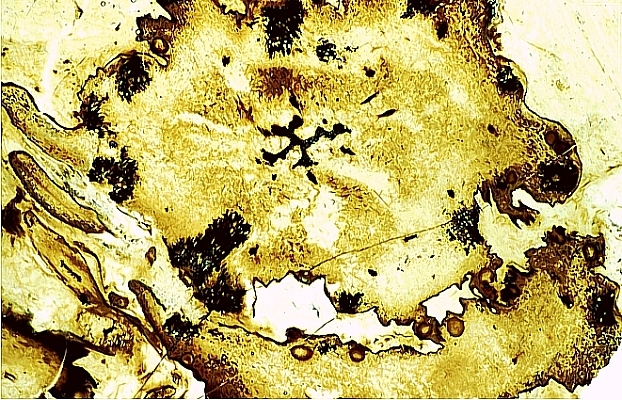 |
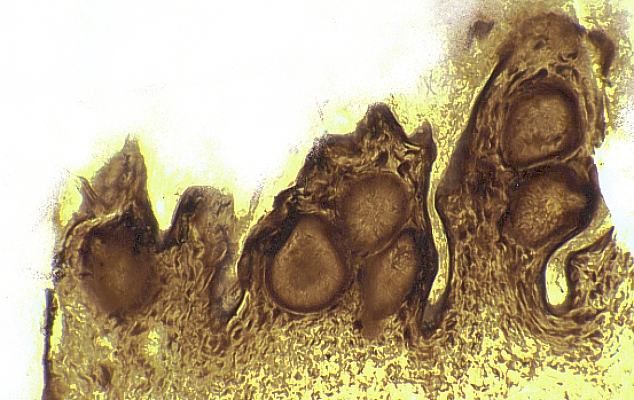 |
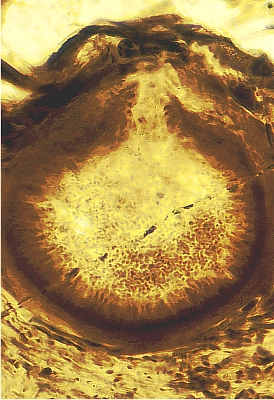 |
| Each globose perithecium is approximately 400 µm
in diameter and develops in
the stomatal chamber beneath a pair of guard cells. The picture above shows the bases of three scale-like Asteroxylon leaves with a number of perithecia. |
At maturity the perithecium has a slightly elongate neck through which the spores are released. The perithecium wall is constructed of two distinct layers of interwoven hyphae. |
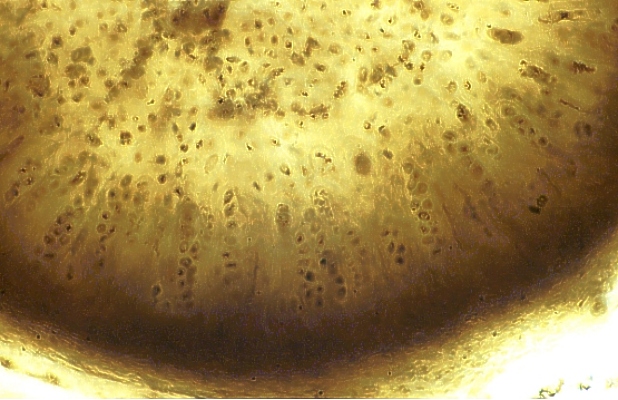 |
Arising from the inner layer are numerous, tightly packed, elongate so-called asci, each up to 50 µm long. The picture shows a number of asci diverging towards the centre of the perithecium that contains many ascospores that have already been released. The ascus wall is thin and appears to consist of a single layer. Some asci possess a slight invagination that encircles the tip, suggesting the presence of some structural modification for spore release. Arising from the same layer as the asci are delicate, thread-like structures. These may represent some form of sterile hairs or are the remains of asci that have discharged their spores. Sterile hairs line the neck canal of each perithecium. |
| Sixteen, and perhaps
up to 32 elongate ascospores, are present in each ascus. Each ascospore
is approximately 5 µm long, and many are bicelled.
The fossil history of the ascomycetes is still poorly understood because of the imperfect nature of the fossil record; essential characters are only rarely preserved. The special significance of the Rhynie chert ist that structures are preserved in great detail. The Rhynie Chert ascomycetes contain characters of the sexual stage of the fungus (e.g., perithecium, asci, ascospores) which are morphologically identical to those found in modern pyrenomycetes. This discovery has significant implications for dating the origin of this group of fungi, and underscores the diversity of fungal/plant interactions early in the colonization of the land.
This joint research project was carried out by Thomas N. Taylor (Department of Ecology and Evolutionary Biology, University of Kansas, Lawrence, Kansas 66045, USA), Hagen Hass and Hans Kerp (Forschungsstelle für Paläobotanik, Westfälische Wilhelms-Universität Münster, Germany) with financial support of the Deutsche Forschungsgemeinschaft (DFG). All figured thin sections are kept in the palaeobotanical collection of the Forschungsstelle für Paläobotanik in Münster. |
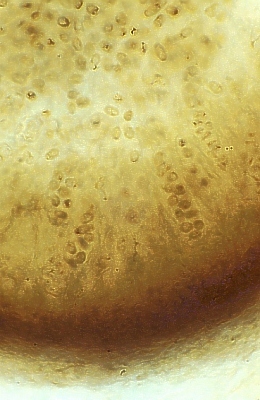 |
TAYLOR, T.N., HASS, H. & KERP, H., 1999. The oldest fossil ascomycetes. Nature, v. 399, p. 648.
| © Forschungsstelle für Paläobotanik, Westfälische Wilhelms-Universität Münster |
October 1999
|